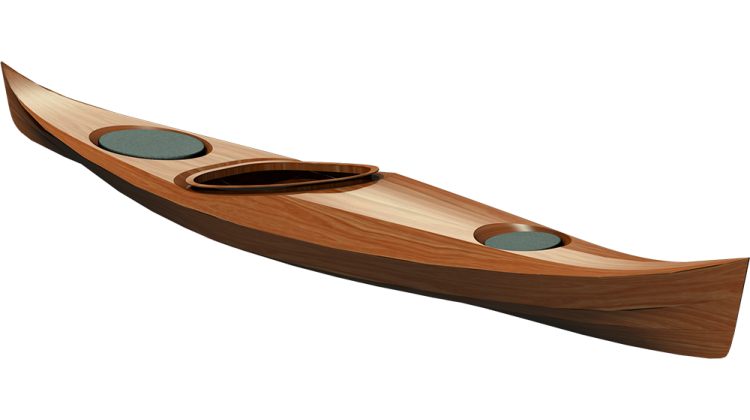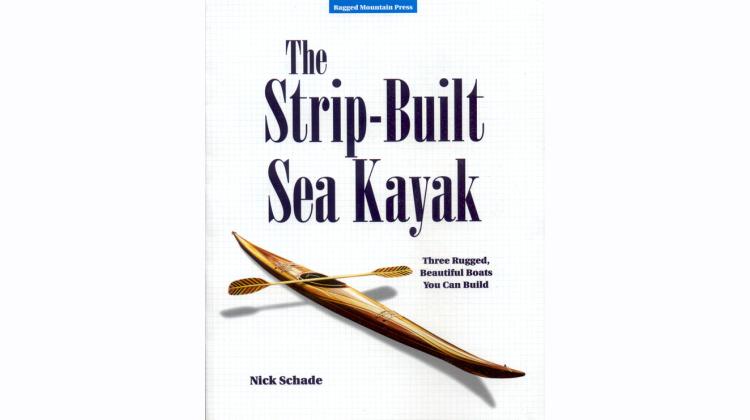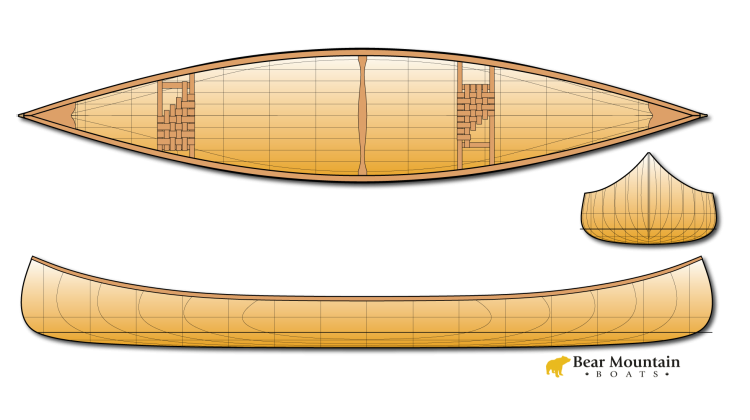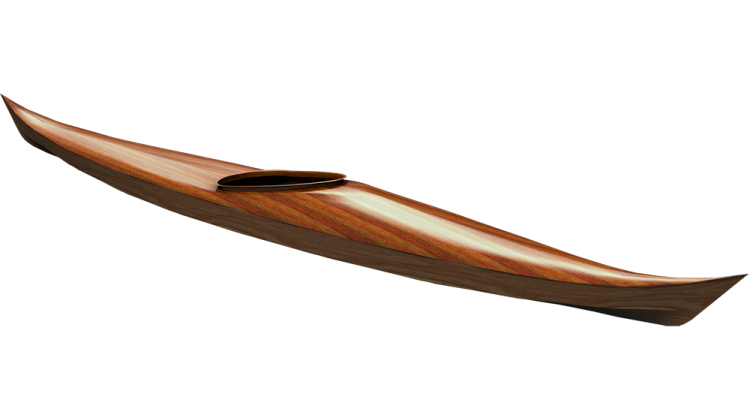In this episode, Nick works on a Petrel strip-built kayak, a 17-foot high-performance sea kayak for a customer. He discusses some minor prep work to clean up some bleed-through areas on the accent strips, then proceeds with the fiberglassing process, applying fill coats with different epoxy resins for the hull and deck.
Nick emphasizes the importance of achieving a matte finish rather than a glassy one and discusses the specific epoxy resins he uses for wetting out the cloth and applying fill coats. In the upcoming episode, Nick plans to work on the combing and continue the boat assembly process, offering a glimpse into the intricate details of building a strip-built kayak.
This is the Strip Built Petrel design.
Support my Patreon at: https://www.patreon.com/NickSchade
Tools:
- Makita Hand-Held Belt Sander: https://amzn.to/2UrTpCk
- Festool RO Finish Sander: https://amzn.to/2tAS9BY
- Festool RO Agressive Sander: https://amzn.to/3bjAAYf
- Festool Contour Pad: https://amzn.to/2GYw43a
- Mirka Bendable Long Board: https://amzn.to/378MYGR
- Mirka Abranet Sanding Mesh: https://amzn.to/2Oy4VbA
Other Tools:
- Solvent Bottle: https://amzn.to/2woRmp5
Hey, welcome back to the Guillemot kayaks workshop. I'm Nick Schade. In this episode, I'm working on a petrel stripped built kayak, the Petrel, which is a 17-foot high-performance sea kayak, and building this for a customer. If you are just tuning into this series, this build is something I actually did over a year ago, so this footage is a little bit old. I'm just now getting around to editing it, and I've just stained the boat and I'm now ready to fiberglass, so let's watch how I did that.
So it's 9:00 in the morning on glassing day, and I've got the heat cranked up. It's starting to warm up in here. I need to roll out the glass and get ready to apply some epoxy. Before I can do that, there's a few places on my accent strips here where I get a little bit of bleed in under the tape. I want to clean that up. I'm really pleased with how the CA glue resists worked on the accent stripes on the deck. Those came out perfect. Just the tape alone here on the hull was not bad. You know, most of it is perfectly clean, but there's a few places with a little bleed through. I think maybe in the future I will use the CA glue on the whole length. I just didn't feel like doing that given the length of the scene there. But a little bit of prep work and then I'll be glassing.
So here, I have a little bit of bleed through. Here, I have a little chisel that I put a little bit of sandpaper on. It doesn't look like much; it's a little bit 120 grit sandpaper. It's about the width of the strip. This bleed through is very thin. It doesn't take much to actually get rid of it. So I'm just going to come here. The sandpaper doesn't make it go away completely, but it really feeds it down, so it'll be really unnoticeable.
It's around 10:30 now. I don't have to get everything ready, the hull first, and then the deck.
It's just past 11:30. I've got the hull and the deck done, and the temperature in here is about 80 degrees. I'm not sure what that is Celsius, but pretty warm. It's wet out nicely; everything looks good. They go to crunch up, and so I have a nice matte finish. I don't want it to look glassy. It's just got a few glossy spots, but that's okay. It's all looking good. I will probably come back right after lunch and give this a fill coat.
So it's just about 2 o'clock now. So the epoxy's had a couple hours to cure. It's a little bit harder than it needs to be, but it's still soft. I'm going to put fill coats on both the hull and the deck, but the hull is just going to get a light fill coat. I'm going to put another layer of glass on it later after I put the deck and hull together and get the stems on. Put another layer of glass on the deck. I'm going to give it a full fill coat, actually trying to bury the weave. I will spread some epoxy on the hull and then squeegee it off, and with the deck, I will brush it on heavy and try to get a nice, level coat on. Let's just get to it.
Looks like the camera stopped recording about 10 minutes ago maybe, but I got the full coat over the whole deck. I hit it with the blowtorch to pop bubbles, level it out nicely. The hull has a squeegee down on bilge. Again, this is just to start to fill the weave so when I put the next coat of cloth on, I can sand it without sanding into the glass. Otherwise, after I squeegeed it to a matte finish, there's deep pores in between the fibers of the yarns that you can't get to with the sandpaper. And so when you go to fiberglass and get a better mechanical bond, you can't sand it sufficiently to really get them. You know, it's fine, but not as good as it could be. So by putting this fill coat on, I have filled down into the pores in the texture. I might just touch the top of the weave, but I won't be sanding down. Just a note here: I used West System 105 resin and 207 hardener for the fill coat. I find it levels better than MAS that I used to wet out the cloth.
To recap, I rolled out the cloth, I smoothed out the wrinkles by pulling on the cloth a little bit and brushing it down with a chip brush. Then I wet out the cloth using MAS low viscosity epoxy resin. I let that set up for a little while, then I applied a fill coat on the hull. I applied a sort of light fill coat that I squeegeed on just enough to fill up the pores of the texture of the fabric, and on the deck, I did a heavy fill coat where I really tried to fill it up completely in the step towards the final finish. For the wet out, I used MAS epoxy, and for the fill coat, I use West System using the 207 hardener with the 105 resin. I find the MAS wets out the cloth more easily and doesn't smell much. I'm used to working with it and does a beautiful job. But I find for the fill coats, MAS works fine. If that's what you've got, use it; it works great. But the West System seems to level out a little bit better, which just requires a little less sanding when it comes time to do that. You know, the difference is minimal, but it makes a difference. So that's why I did that.
In the next episode, I will work on the combing and start to clean up the inside. You'll see how far I get. Again, this is a video from over a year ago, and I forget what I even have in the can, so how long the video is depends on what I've got there. If you enjoyed this episode and you like seeing how these boats go together, I really appreciate your support. Any kind of support you can provide is really appreciated. Just liking this video helps the exposure of it, lets more people see it, and the more exposure I get, and I can earn more through the ads, and you know, it just gets the word out there.
Otherwise, follow, hit subscribe, turn on notifications, all that stuff. I also have a Patreon page where if you want to provide some direct support towards these videos, that's an opportunity to do that. But really what pays for these videos the most is if you buy planes or my book. I've got two books actually on the process of strip building boats, one specifically on building sea kayaks, another on generally about building strip build small boats, and that book includes the offsets for this petrel design. So if you want to build one of these petrels, that's a great resource. You get the book as $29.95, something like that, and that includes all the offsets which are members which you can graph out and draw out the plans full size yourself. Otherwise, you go to my website, Guillemot kayaks.com. I've got full-size plans with this boat and a lot of other designs there. And with those planes, you can take the sheet of paper, glue it to a sheet of half-inch MDF and cut out around the lines, and you'll have a set of forms to start building your boat. And you will also find a lot of my videos there with descriptions on what's in it above and beyond the whatever voiceover I did in the video. And there's a lot of information there about the whole process of building boats. So any support you can provide is deeply appreciated.
So until the next episode, again, thanks for watching and happy paddling.






